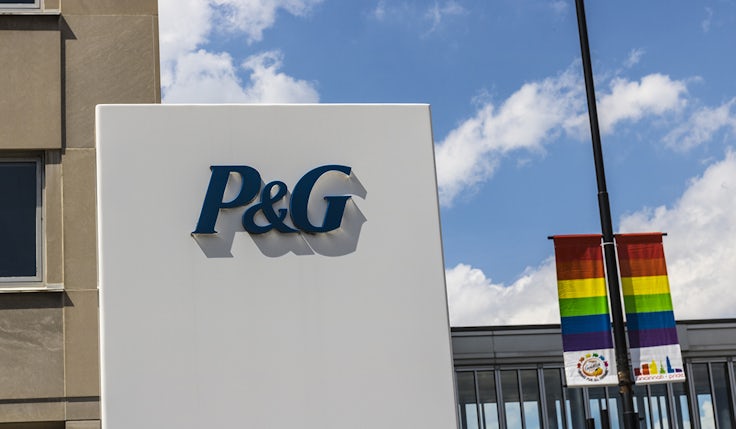FMCG demand, B2B spend, emails: 5 interesting stats to start your week
We arm you with all the numbers you need to tackle the week ahead.
Demand falls in major markets as consumers watch spending
The six largest markets in Europe – France, Italy, Germany, Spain, the UK and the Netherlands – have seen a 1.1% fall in demand for unit sales of consumer goods over the past year, as a result of the cost of living crisis, inflation and hangover from the pandemic. This dropped to a 1.4% decline in the fourth quarter of 2022 alone.
The study cover 230 FMCG categories and more than 10 million SKUs. It flags the rise of the ‘prosumer’, a price-aware and forward-looking consumer who will moderate what they buy and consume to reduce the financial impact.
“This decline in unit sales is the clearest indication yet that demand is dragging across the largest European FMCG markets. We’re forecasting unit demand to decline sharply in food staples where price inflation continues to be the most intense,” says Circana global senior vice-president of strategic growth insights, Ananda Roy.
With 86% of European shoppers reporting having to make changes to what they buy, “many are having to adopt a strategic approach to their shopping – making tough decisions and only based on needs”, she adds. “They are no longer sleep walking into the store and getting their heads turned by impulse buys and clever marketing promotions.”
Source: Circana
Usefulness of brand emails more than doubled since 2021
 Nearly a third (32%) of consumers find emails from brands to be useful, up from just 15% in 2021. Plus click-through rates have risen across all types of email communications, according to the latest Consumer Email Tracker from the DMA.
Nearly a third (32%) of consumers find emails from brands to be useful, up from just 15% in 2021. Plus click-through rates have risen across all types of email communications, according to the latest Consumer Email Tracker from the DMA.
The ways in which consumers use email seems to have changed fast. More than a third (37%) consciously separate personal and marketing emails in different inboxes, up from 23% in 2021.
The devices used to read emails have changed too. Laptops and PCs were the most popular way to access emails in 2021, yet 79% of people now use their phones.
Customers limit the number of brands they want to hear from, with an average consumer registered for emails with around 10 brands: discounts and promotions are the most common reason for registering.
The main reason people unsubscribe from a company’s email list is getting too many emails. Well over half of people (57%) cite this as the chief reason for hitting the unsubscribe button.
Source: DMA
Social media ad spend drops for the first time
 Advertising spend on social media fell off rapidly in the second half of 2022, marking the first time the UK market has seen a decline since measurement by the Advertising Association (AA) and Warc began in 2014.
Advertising spend on social media fell off rapidly in the second half of 2022, marking the first time the UK market has seen a decline since measurement by the Advertising Association (AA) and Warc began in 2014.
Advertising spend on social media channels dropped by 13.9% in the last six months of 2022, according to the latest AA/Warc Expenditure Report. This sharp decline followed a period of booming growth during the first half of the year, when ad spend on social channels was up 28.3%.
The growth in the first half of the year is broadly in line with previous periods, with spend on social media particularly strong post-pandemic.
Over the full year, social media spend, which is a sub-category of the online display section in the report, increased by 4.9%. The overall category grew at 10% in 2022 and is projected to grow by 1.7% in 2023. Total ad spend grew 8.8% in 2022.
Source: AA/Warc
More B2B marketers need to ‘defend the spend’
 Nearly half of B2B marketers find difficulty in using data to inform decisions and measure performance, according to The State of B2B Marketing Budgets 2023, from US B2B group Integrate. This suggests an increasing need for the marketers to “defend the spend” on their budgets to their finance departments and C-suite colleagues, says the study.
Nearly half of B2B marketers find difficulty in using data to inform decisions and measure performance, according to The State of B2B Marketing Budgets 2023, from US B2B group Integrate. This suggests an increasing need for the marketers to “defend the spend” on their budgets to their finance departments and C-suite colleagues, says the study.
As a result, nearly nine out of 10 B2B marketers say data compliance and accuracy is now a priority at their company.
The research finds 38% of B2B marketers are facing budget cuts, while 39% are being met with increasing or impossible growth targets. Two-thirds say they are facing burnout because of the stress.
However, B2B marketers are clearly resilient with 43% optimistic about their team’s performance and 26% very optimistic.
Source: Integrate
Discounters take record share of UK grocery market
 Aldi’s share of the UK grocery market hit 10.1% this month, the first time it has ever made double digits.
Aldi’s share of the UK grocery market hit 10.1% this month, the first time it has ever made double digits.
The discounter increased sales by 25% over the 12 weeks to 16 April to reach the new landmark. However, rival Lidl just pipped it as the fastest growing supermarket, with its sales rising 25.1%.
It too hit a new record market share of 7.6%, as it inches closer to Morrisons which now has an 8.7% share of the market having increased its sales by just 0.1%.
The UK’s three largest supermarkets each increased their sales by around 8%, with Asda leading the way on 8.8%, followed by Sainsbury’s (8.7%) and Tesco (8%). Tesco still has the largest share of the market by some way (27%), but there is now less than 1% between Sainsbury’s 14.9% and Asda’s 14% share.
Fraser McKevitt, head of retail and consumer insight at Kantar, says: “Consumers are continuing to shop around, visiting at least three major retailers every month on average. The discounters have been big beneficiaries of this, with Aldi going past a 10% market share for the first time this month. That’s up from 5% eight years ago in 2015, so we can see just how competitive the market can be.
“Retailers are really battling it out to show value to shoppers, but if consumers feel their offer isn’t quite right then they’ll go elsewhere.”
Source: Kantar








Comments